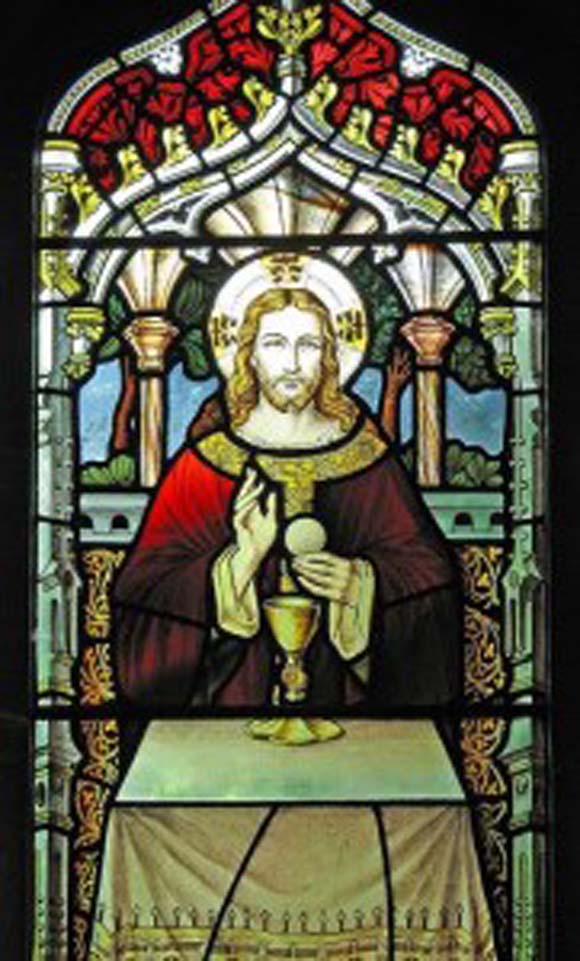
A-Z of the Mass: Communion
740
 In the Summa Theologiae, St Thomas reminds us that, since the Fall, mankind has had to rely upon receiving God’s grace through material things which are perceivable to the senses (ST III 61,1) It is in this way, by the very things we know and which are familiar to us, that God reaches out to us and ultimately draws us back to him. Of all these material things, or sacraments, which God uses to draw us ever closer to him, Holy Communion or the Eucharist is the greatest.
In the Summa Theologiae, St Thomas reminds us that, since the Fall, mankind has had to rely upon receiving God’s grace through material things which are perceivable to the senses (ST III 61,1) It is in this way, by the very things we know and which are familiar to us, that God reaches out to us and ultimately draws us back to him. Of all these material things, or sacraments, which God uses to draw us ever closer to him, Holy Communion or the Eucharist is the greatest.
The reality which we call Holy Communion or Eucharist is established at the Lord’s Supper. As we read in the Gospel of St. Matthew, Jesus first offered the apostles that which He was about to change, bread and wine – ordinary staples as familiar to the disciples as they are to us. He then changed or consecrated the bread and wine and gave to them that which had become His own Flesh and Blood, as Communion: “Jesus took bread and blessed and broke and gave it to His disciples and said, ‘Take you and eat, this is my Body.’ And taking the chalice He gave thanks and gave it to them saying’, ‘Drink you all of this. For this is my Blood of the New Testament which shall be shed for many unto remission of sins’” (Matthew 26:26-28).
In Chapter Six of St John’s Gospel, we see most clearly how Christ emphasizes the complete necessity of being nourished by His Body and Blood if the supernatural life we receive at our Baptism is to be nourished and sustained. It is worth quoting at length; “I tell you most solemnly, if you do not eat the flesh of the Son of Man and drink His blood, you will not have life in you. Anyone who does eat my flesh and drink my blood has eternal life and I shall raise him up on the last day. For my flesh is real food and my blood is real drink. He who eats my flesh and drinks my blood lives in me and I live in Him” (John 6: 53-56).
In this pivotal moment – the institution of the Eucharist – Christ gave us His own Body, and His own Blood shed in establishing the New Covenant. This was a single act in history but one which Christ commissioned the disciples, and thus His Church, to re-enact. This is so that this one ultimate sacrifice in history remains constantly efficacious and constantly made effectual for us all in each legitimate celebration of the Eucharist. It is re-presented through the sacrifice of Mass performed by the historical entity which is the Church of Christ through its validly ordained priests and bishops.
Holy Communion is therefore not simply a liturgical tradition instituted by Christ, it is Christ – His own Body and Blood – made really and truly present for us under the ‘species’ of bread and wine. It is important to emphasise that this consecration is to be understood as a genuine change of one substance – bread and wine – into another – the Flesh and Blood of Jesus Christ. (More on Transubstantiation later in this series …)
In partaking of the Eucharist, the individual in communion with the whole Church realizes and declares that grateful response to God’s offer of grace, his self-communication, which preserves, increases, and renews the life of grace received at Baptism. Thus the principal fruit of receiving the Eucharist in Holy Communion is an intimate union with Christ Jesus; therefore as Christ said: “He who eats my flesh and drinks my blood abides in me, and I in him” (John 6: 56).


